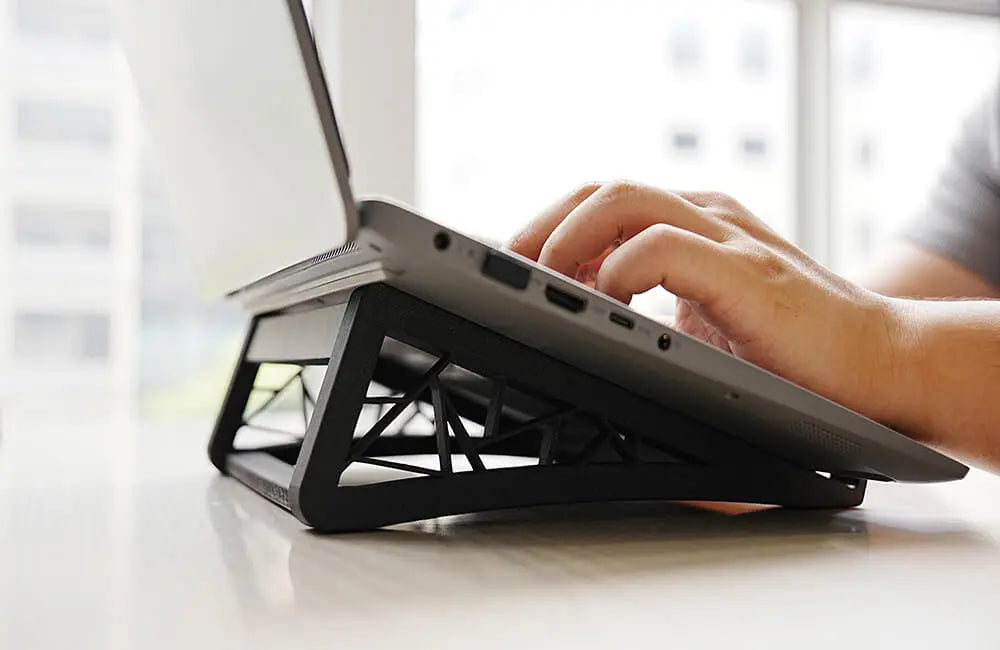
Carbon Fibre Filled Filaments
Share
Carbon fibre filaments are made by infusing short carbon fibres into base materials, such as PLA, ABS or PETG. These fibres enhance the material's strength and stiffness while also making the printed parts lighter and more dimensionally stable. The presence of carbon fibres helps minimise warping and shrinkage as the part cools. Although the general print settings for carbon fibre filaments are similar to their base materials (such as standard PLA settings for PLA-based carbon fibre filaments), the abrasive nature of the fibres can pose challenges, requiring specialised hardware to prevent printer damage.
Pros & Cons of Carbon Fibre Filled Filaments:
Pros
- Increased strength and stiffness
- Lightweight, resulting in stronger parts without added weight
- Excellent dimensional stability, reducing warping during cooling
Cons
- Highly abrasive, requiring a hardened steel nozzle to avoid damage
- More prone to oozing during printing
- Increased brittleness, making the filament more fragile
- Higher likelihood of clogging due to the non-melting fibres
Hardware Requirements for Carbon Fibre-Filled PLA:
Bed:
- Temperature: 45–60°C
- Heated bed optional
- No enclosure needed
- Recommended build surfaces: Painter’s tape, PEI, glass plate, or glue stick
Extruder:
- Temperature: 200–230°C
- Requires a wear-resistant, hardened steel nozzle
Cooling:
- Part cooling fan required
Best Practices for Printing with Carbon Fibre Filaments
Upgrade to a Hardened Steel Nozzle
Carbon fibres are abrasive and will wear down standard brass nozzles over time. Switching to a hardened steel nozzle is essential for printing with carbon fibre-filled materials. Since steel nozzles are less thermally conductive than brass, you may need to increase the extruder temperature by up to 40°C. Reducing the cooling fan speed can also help maintain a stable print temperature.
Adjust Retraction Settings to Prevent Clogs
The solid carbon fibres in the filament increase the risk of nozzle clogs. To mitigate this, reduce your retraction distance or disable retractions entirely. Retractions can cause a build-up of fibres, leading to blockages in the extruder.
Slow Down Your Print Speed
Printing at slower speeds can relieve some stress on the extruder, giving it a better chance of pushing through minor clogs. Lowering your print speed by 25-50%, depending on your filament brand, can help achieve smoother results.
Use a Smooth Filament Path
Carbon fibre-filled filaments are more brittle than their base materials and can snap if forced through sharp angles or tight spaces. Ensure the filament travels smoothly from the spool to the nozzle with gentle curves. Using a PTFE guiding tube or positioning the spool strategically will reduce the chances of filament breakage.
Bonus Tips for Optimising Your Prints
Use Larger Nozzles: A nozzle diameter of 0.5mm or larger reduces the likelihood of clogs, as the carbon fibres pass through more easily.
Adjust First Layer Height: If the nozzle clogs early in the print, try raising the first layer height. A nozzle that’s too close to the bed can create excess back pressure, causing a temporary clog.
